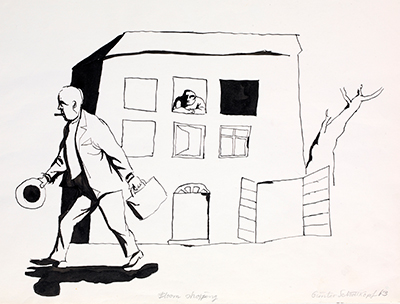BITE-SIZED HISTORY
Published in Issue 3 (May/June 2022), Volume 30BY DONAL FALLON
A CROKE PARK REVAMP
Funding from Fáilte Ireland’s Dublin Surprising Stories scheme has been instrumental in bringing about a significant renovation of Croke Park’s GAA Museum, bringing new artefacts before the visiting public for the first time. Larry McCarthy, president of the GAA, has noted that ‘this new exhibition has some amazing items and it’s important that GAA supporters, history lovers and the general public have a place to discover our evolution and learn more about us’. One of the most visually interesting items newly on display is a New York captain’s jersey from 1927, the year after Gaelic Park in the Bronx came into being. There is also the impressive banner of Bray’s Gaelic Athletic Association club, featuring Robert Emmet. The role of women in the native games and the changing architecture of Croke Park itself are both given more space within the new revamp. Other beneficiaries of funding from Fáilte Ireland include the Clondalkin Round Tower, St Patrick’s Cathedral and the new Custom House Museum.
DUBLIN EVENING MAIL FINALLY ONLINE
In existence from 1823 until 1962, the Dublin Evening Mail was Ireland’s longest-running evening title. Once co-owned by Sheridan Le Fanu, it was mentioned by James Joyce in the pages of Dubliners. It is amongst the newest additions to the growing Irish Newspaper Archive, www.irishnewsarchive.com. Interestingly, the Archive notes that ‘In the early 1960s the Irish Times purchased the title in an attempt to relaunch it as a rival to the Evening Herald and Evening Press’. Within its archive are theatre reviews by a young Bram Stoker. Bram’s first reviews appear in the paper in late November 1871, some 26 years before Dracula. Deeply conservative in editorial tone, the paper’s coverage of the Land League agitation is especially interesting. The Irish News Archive is available at home on a subscription model and is free to access in libraries across the country.
CONRADH NA GAEILGE’S ARCHIVE GOES WEST
Consisting of more than 600,000 pages, the archive of Conradh na Gaeilge is a treasure trove of materials vital for an understanding of Irish culture and politics. Niall Comer, president of the organisation, has noted that ‘the person who spends time looking through the archive material will recognise immediately that it contains a remarkable insight into a decisive period in the country’s history’. To NUI Galway falls the task of cataloguing this impressive collection and digitising significant parts of it, which will bring it to researchers and the public internationally. A taste of the kind of hidden stories contained within it was to be found in the Irish Times of 25 February 2022, detailing the attempts of Conradh na Gaeilge to present UVF prisoners in Long Kesh with An Fáinne, the Irish-language badge of proficiency. Needless to say, permission was refused. Significant figures in the story of the Irish language in the twentieth century, such as Pádraig Ó Mathúna, Proinsias Mac Aonghusa and Douglas Hyde, are all represented within the manuscripts and papers.
99% INVISIBLE EXPLORES SHANNON AIRPORT
With approximately 500 million downloads, 99% Invisible is a runaway success of a podcast. Describing itself as being about ‘the thought that goes into the things we don’t think about—the unnoticed architecture and design that shape our world’, episodes have explored diverse themes like the history of the postage stamp and the rise of brutalist architecture. A recent episode, Call of Duty: Free, is all about Brendan O’Regan and Shannon Airport’s pioneering Duty Free. We learn of how it all began, and how ‘for six years, Shannon was the only airport duty free shop in the world’. Visitors, we learn, ‘came from all over the world to learn more, including the future Chinese president, Jiang Zemin’. It’s an entertaining and educational listen from a podcast with a vast and rewarding back catalogue: https://99percentinvisible.org/episode/call-of-duty-free/.
CELEBRATING ULYSSES
Günter Schöllkopf (1935–79) may not be a familiar name here, but the work of the Stuttgart-born etcher and illustrator goes on display in the National Gallery of Ireland (NGI) from 21 May until 21 August. Schöllkopf’s interests, the NGI tells us, ‘lay in such poets, playwrights and novelists as François Villon, Heinrich Heine, Stendhal, Honoré de Balzac and James Joyce’. His work was exhibited internationally in his lifetime and has been the subject of renewed interest in Germany in recent years. He was fascinated by Ulysses, and 35 of his works completed in the 1960s and ’70s explored the characters of Joyce’s imagination and brought key scenes from the book to life. The exhibition, curated by Niamh MacNally, is one of the more internationally focused events around the centenary of the book. Other forthcoming exhibitions include an exhibition of work by Estella Solomons, painter and member of Cumann na mBan, which will mark the end of the Decade of Centenaries programme from the NGI.

















